The Sultan’s Signature: An Introduction to Ottoman Tughras
Explore How the Ottoman Sultans Turned Their Signatures into Imperial Masterpieces.
What is a Tughra? The Sultan’s Signature as Art
Imagine signing your name in a way so elaborate and beautiful that it becomes a work of art. That’s essentially what a tughra is – the eye-catching calligraphic emblem or monogram that served as the official signature of Ottoman sultans. Far more than just a name scribbled on paper, a tughra was a stylized symbol of the sultan’s authority and an icon of the empire’s culture. From the founding of the Ottoman state in the 14th century up until the abolition of the monarchy in 1922, tughras appeared in all sorts of places – on royal decrees, coins, monuments, and more. In fact, by the late Ottoman period the tughra had become as synonymous with the sultan’s power as a royal coat of arms or imperial seal in Europe. It was both a functional signature (to authenticate documents) and a piece of calligraphy art, often drawn with such skill that it dazzled the eyes.
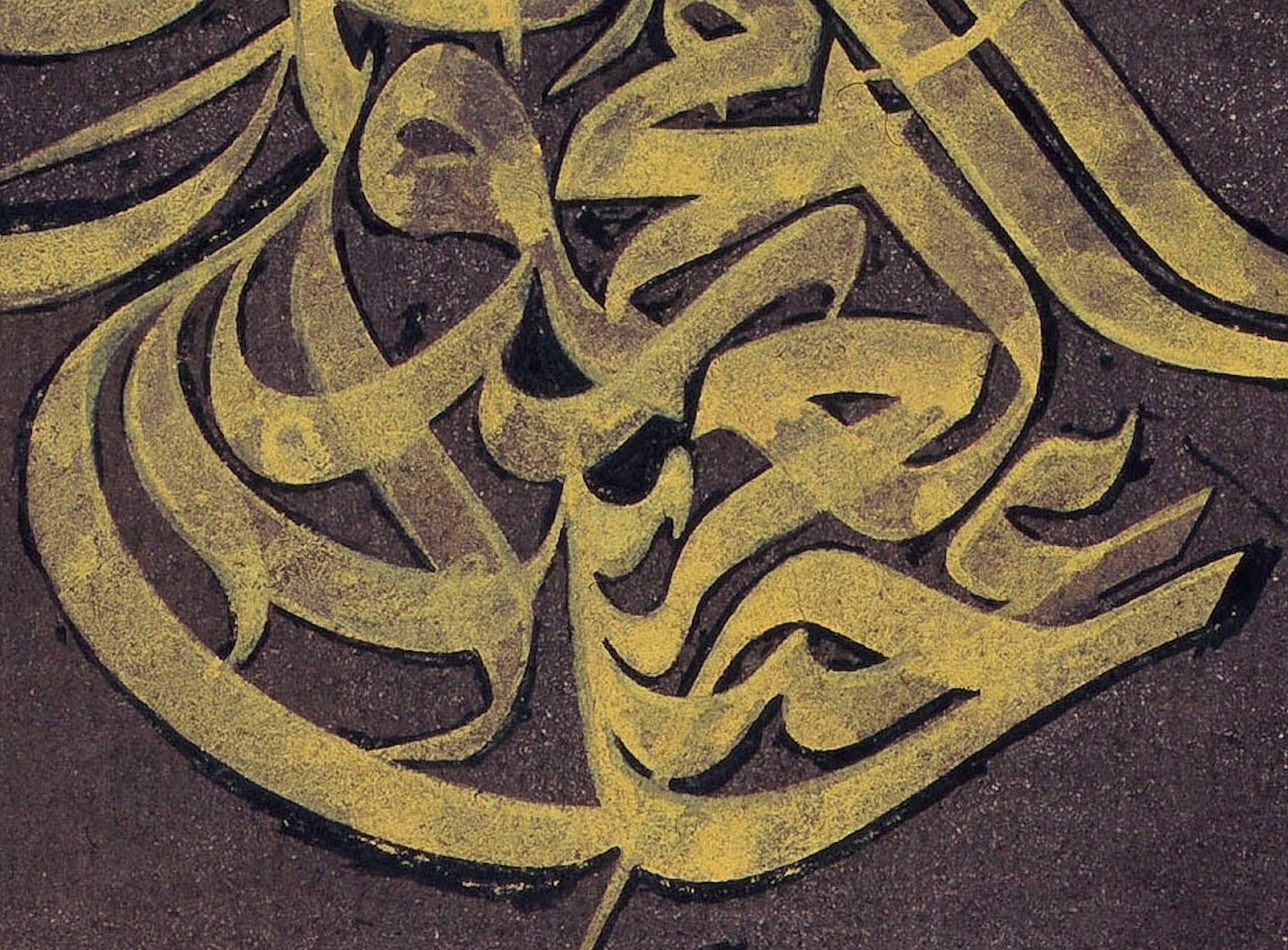
At first glance, a tughra looks like an abstract design – swirling lines, bold loops, and tall vertical strokes intertwined in a harmonious pattern. To the untrained eye it might even be hard to read. That was partly intentional: the unique shape made it difficult for anyone to forge the sultan’s signature. But to those familiar with Ottoman Turkish in Arabic script, a tughra actually spells out the sultan’s name and titles in a highly stylized way. It’s essentially text turned into emblem. Each sultan of the Ottoman Empire had his own distinct tughra, designed when he ascended the throne. Drawing it required masterful penmanship – a specialized court calligrapher would “draw” (not write, interestingly, the Ottomans used the verb tuğra çekmek, meaning “to pull a tughra” rather than yazmak “to write” ) the basic tughra, and often an illuminator would decorate it with gilding and floral motifs on official documents. The result was a signature that was at once a personal seal and a piece of imperial artwork.

Beyond their practical use, tughras hold a special place in Turkish-Ottoman culture as well. They developed into a unique branch of Islamic calligraphy over the centuries. Even today, these ornate signatures fascinate many – you’ll find tughras in museum collections around the world and even inspiring modern graphic designs. They are a window into the past, blending art, language, and power into one symbol. To truly appreciate the beauty and significance of Ottoman tughras, let’s dive into their origins, how they evolved, what they look like, and the stories behind them.
From Orhan Gazi to the Last Sultan: Origins and Evolution
The tradition of the tughra began at the very dawn of the Ottoman Empire. The very first Ottoman tughra on record belonged to Sultan Orhan Gazi (reigned 1324–1362), the second ruler of the dynasty. No tughra of Osman Gazi (the founder of the empire) has been found, so Orhan’s monogram is the earliest example we have. In Orhan’s tughra – which simply read “Orhan bin Osman” (Orhan, son of Osman) – one can already see the seeds of the tughra’s distinctive shape. The way the names Orhan and Osman were interlaced in his signature established a basic framework that later sultans would build upon . It might have been relatively plain compared to later examples, but this first tughra was the blueprint for an imperial tradition that lasted for six centuries.
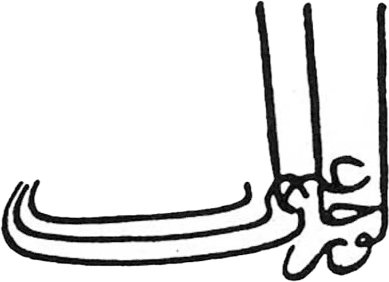
As each new sultan came to power, he adopted a tughra of his own, following the established style but adapting it to his name and titles. Over time, the design of tughras became more elaborate. By the mid-15th century, during the reign of Mehmed II (Fatih), the tughra had evolved into a standardized form with all its major components – the swooping loops on the left, the vertical shafts rising high, and the extended lines to the right. In other words, by the time of Mehmed the Conqueror, the tughra’s classic shape was set.

Subsequent sultans generally stuck to this form, making only minor stylistic tweaks. In fact, if you look at an Ottoman tughra from the 16th century and one from the 19th century, they appear remarkably similar in overall layout . This continuity was deliberate: each tughra was designed to echo the previous ones, emphasizing dynastic continuity. Ottoman calligraphers often tried to make a new sultan’s tughra resemble his predecessor’s as much as possible, while still incorporating the new ruler’s identity . Sultans saw the tughra as a symbol of the Ottoman state itself, an unbroken emblem passed down through generations .
That’s not to say there were no developments or highlights along the way. Early tughras started off fairly unadorned, but as the empire grew in wealth and sophistication, so did the tughras. By the 16th century – the golden age of Suleiman the Magnificent – tughras had reached new heights of artistic refinement. In fact, among the first couple dozen Ottoman tughras, art historians point to Mehmed II (the 7th sultan) and Suleiman I (the 10th sultan) as having signatures that stand out for their aesthetic leap. Suleiman’s tughra in particular is often cited as one of the most beautiful of the “classical” period, with perfectly balanced proportions and elegant curves. It’s no surprise that surviving firmans (decrees) from Suleiman’s reign show his tughra boldly painted in gold and blue, adorned with delicate flowers and patterns. By his time, the tughra wasn’t just a rubber-stamp style signature; it was a canvas for imperial art.
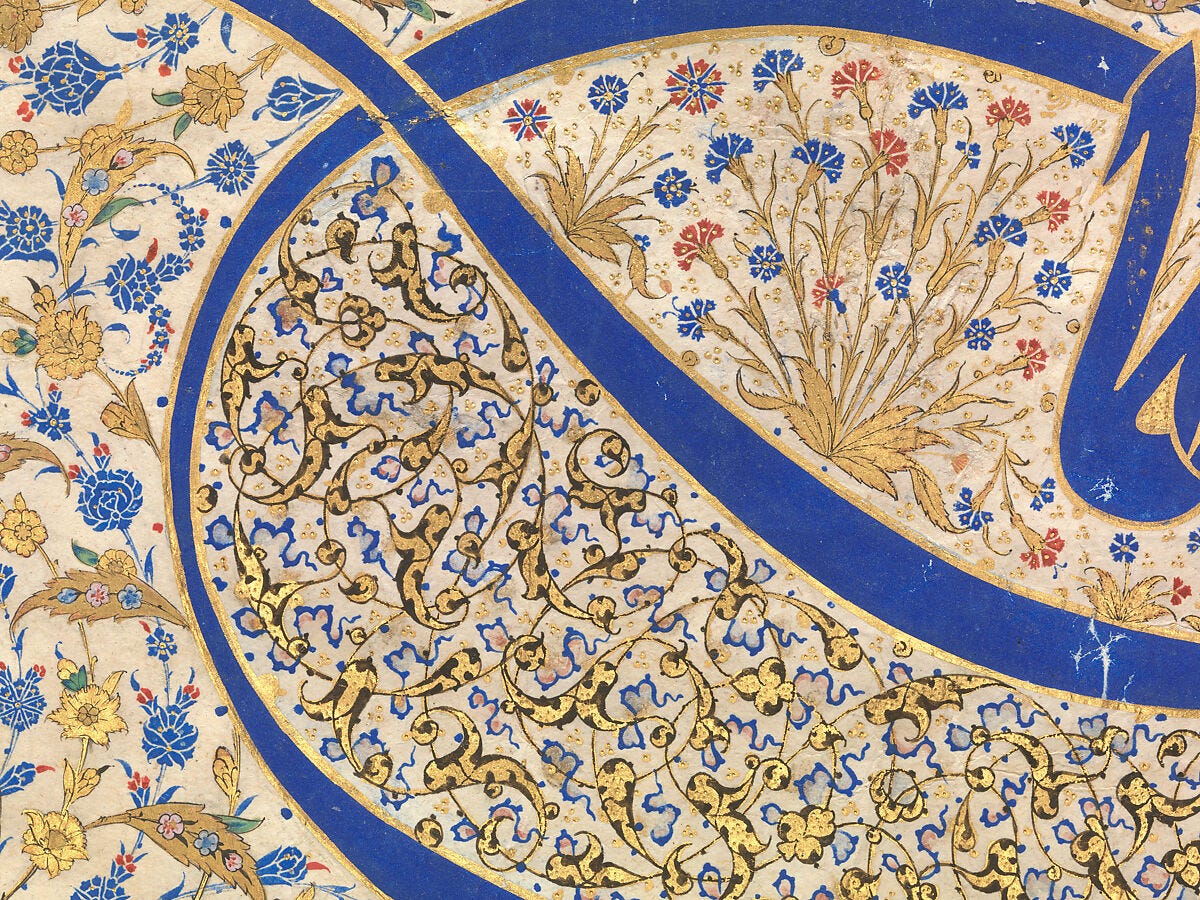
Over the centuries, each sultan’s tughra retained that recognizable form – so much so that they might all look “the same” at first glance. Yet, on closer look, no two are identical. The differences lie in the details: the specific text (the names and titles of the sultan), subtle variations in shape or angle introduced by the calligraphers, and the decorative flourishes around it. For example, by the late 16th century Sultan Murad III’s tughra introduced a triangular upper shape in the base that earlier tughras didn’t have . A few sultans later, around 1808, Sultan Mustafa IV’s tughra even gave the base a rounded curve . These were minor tweaks to the overall template, but they show that the art wasn’t static.
One significant addition to the tughra formula was the inclusion of an Arabic phrase “el-muzaffer daima”, meaning “ever victorious.” This prayerful motto, wishing the sultan perpetual victory, was first introduced in the tughras during Sultan Murad II’s time in the 15th century. After that, nearly every Ottoman tughra contains this phrase as a standard feature following the ruler’s name . The presence of “el-muzaffer daima” not only added to the tughra’s length and calligraphic complexity (imagine finding room for those extra words in the design!) but also reinforced the imperial ideology – every time the sultan “signed” something, it implicitly declared him ever-victorious by God’s grace. Talk about a confidence boost on your letterhead!
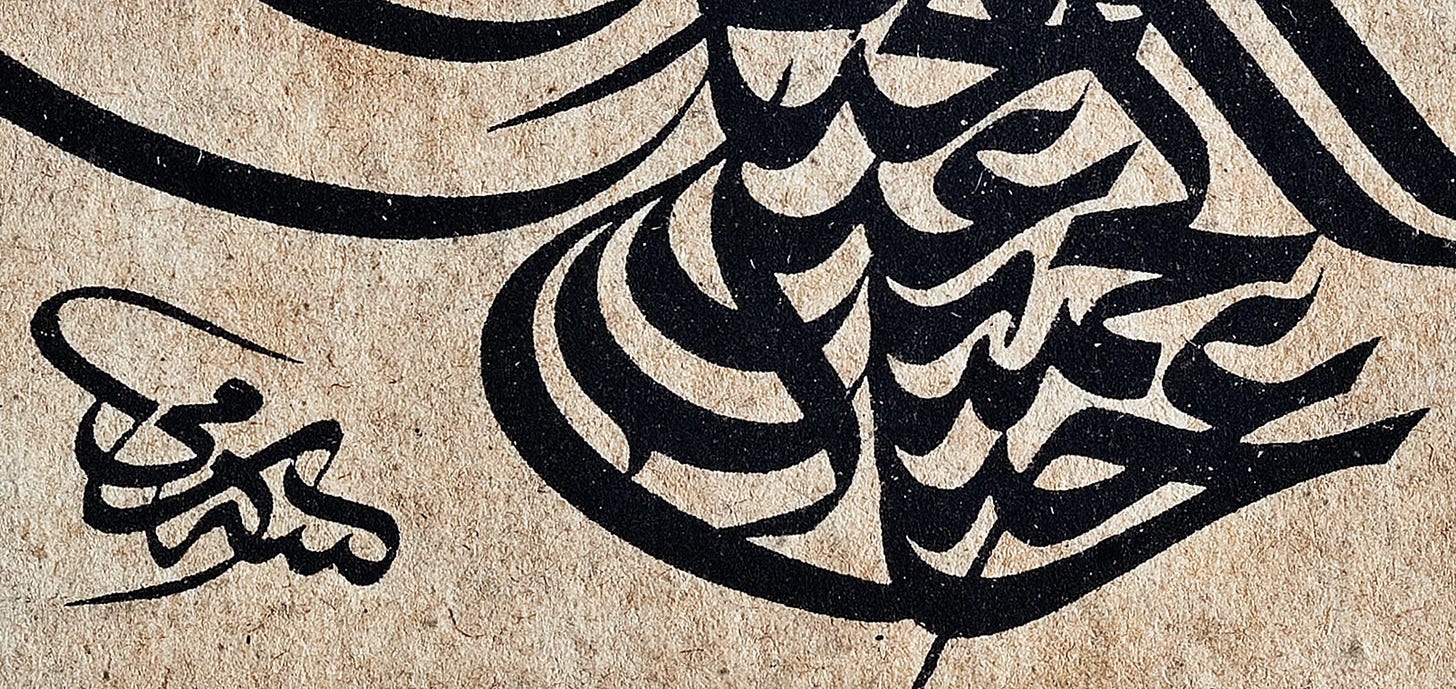
By the 19th century, tughra design and technique reached a new peak with the contributions of master calligraphers. The tughra of Sultan Abdülhamid II (reigned 1876–1909) is often hailed as the ultimate example of the art. Designed by the renowned court calligrapher Sami Efendi in 1881, Abdülhamid’s tughra was so exquisite that it earned the nickname “Tuğraların Padişahı” – “the Sultan of Tughras”. It’s a dense, swirling masterpiece of penmanship that somehow manages to be both extraordinarily complex and perfectly legible (at least to those trained to read it). We’ll talk more about Sami Efendi and this tughra later, but it represents the culmination of centuries of refinement.
Finally, in 1922 the Ottoman sultanate was abolished, and with it the official use of the tughra came to an end. The Turkish Republic that followed removed the tughra from official use – in fact, one of the first acts was to stop using the sultan’s tughra on new state documents . Yet, even as a chapter of history closed, the legacy of the tughra lived on (and continues to do so) as a cultural and artistic treasure.



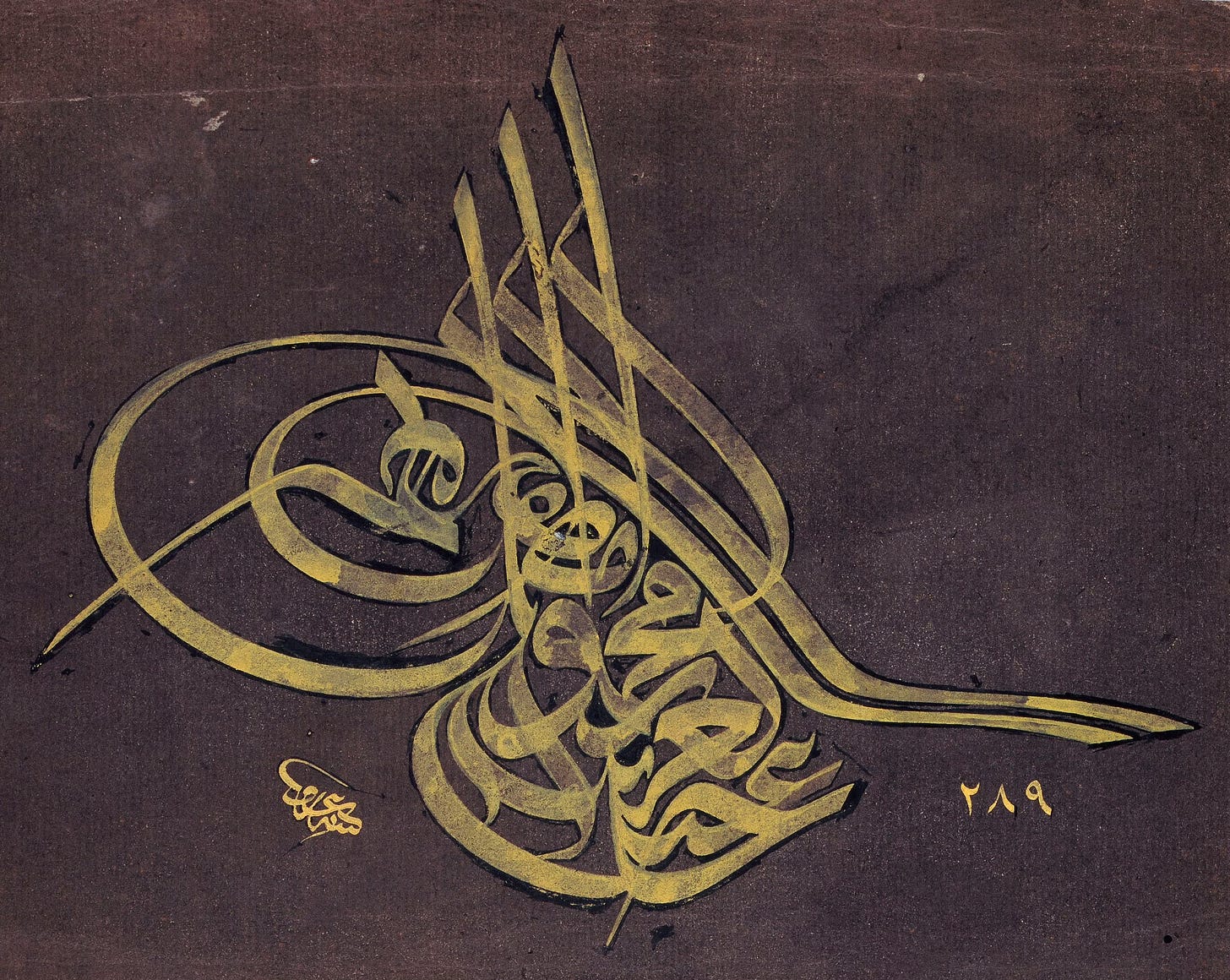
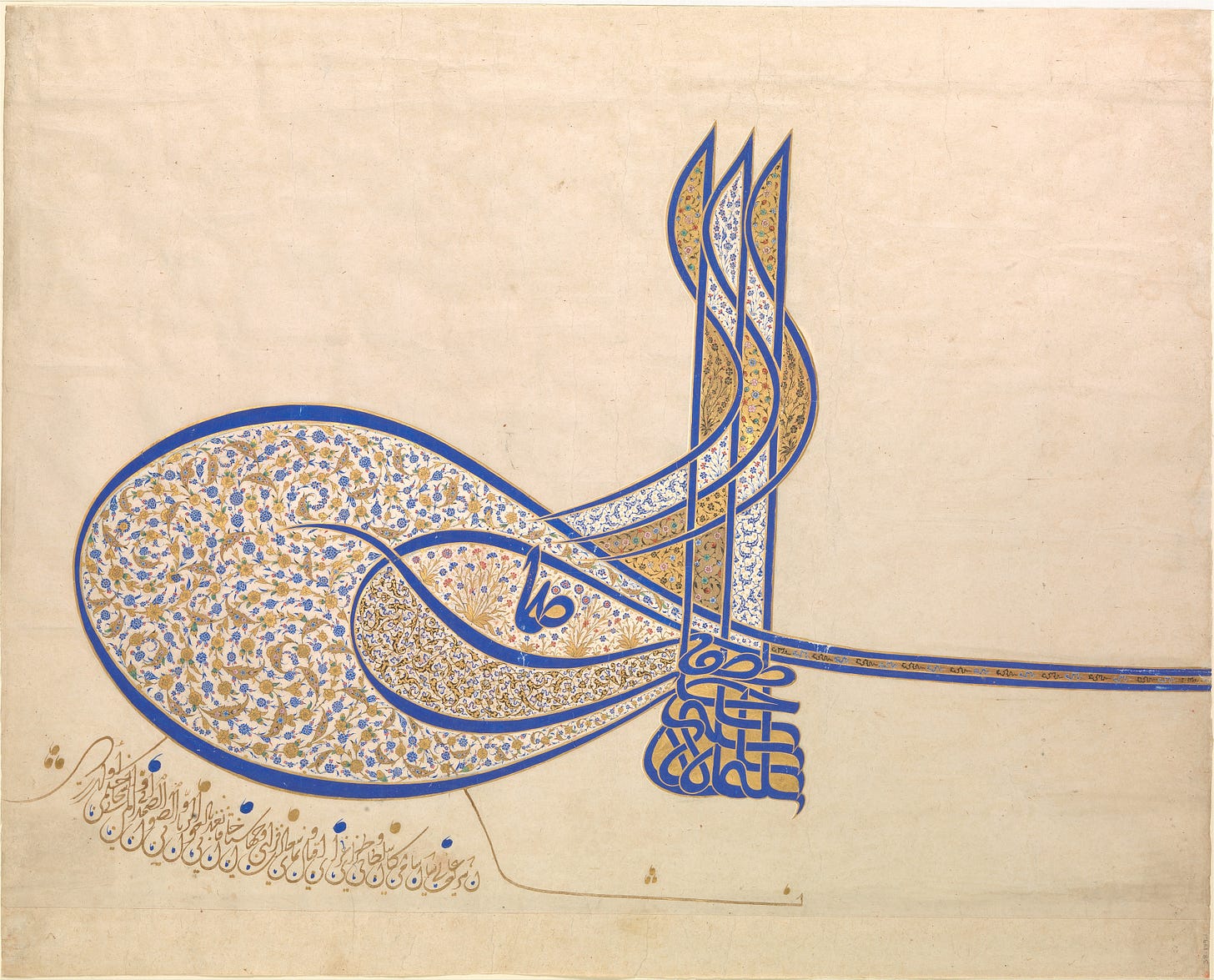
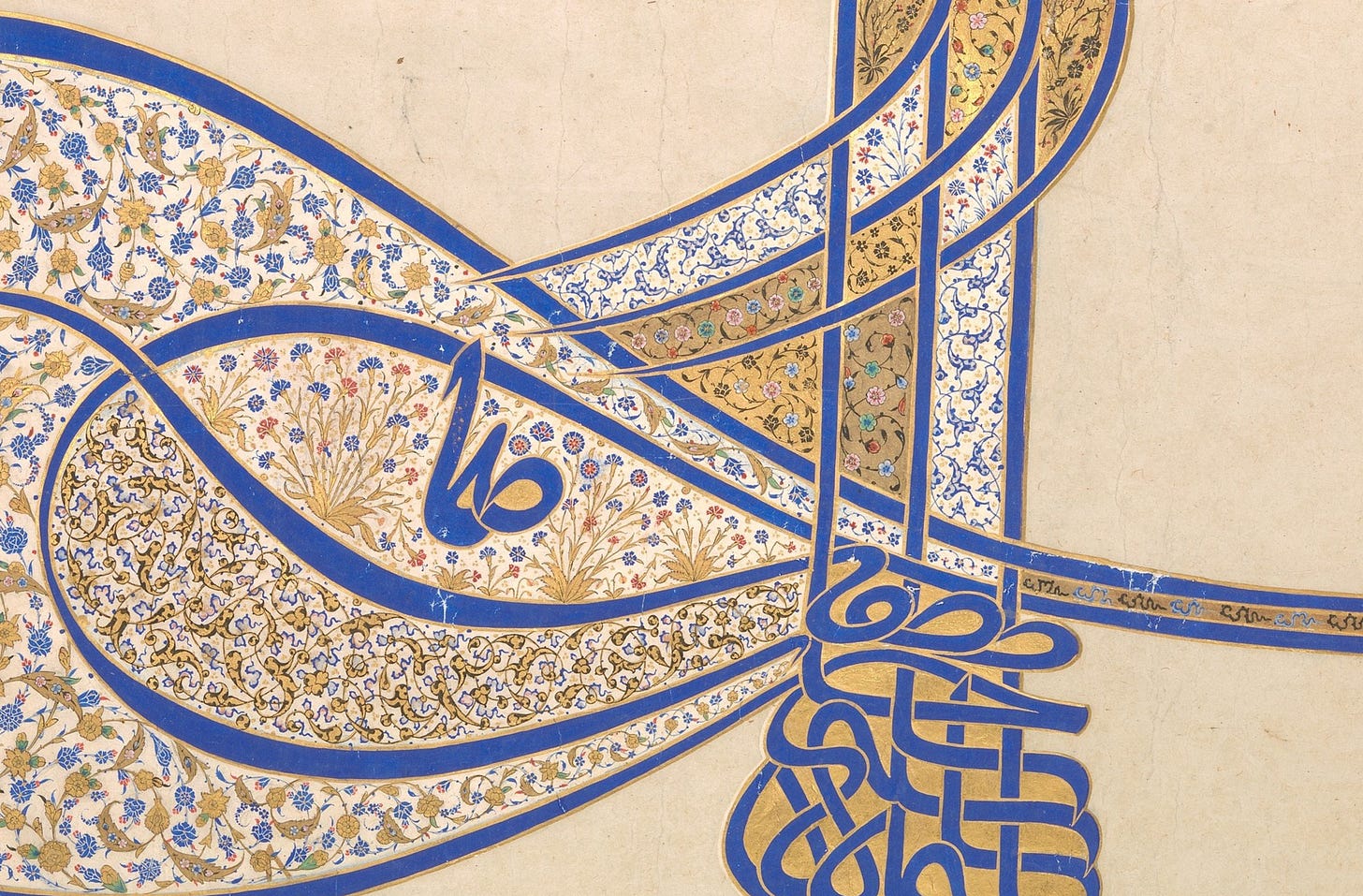
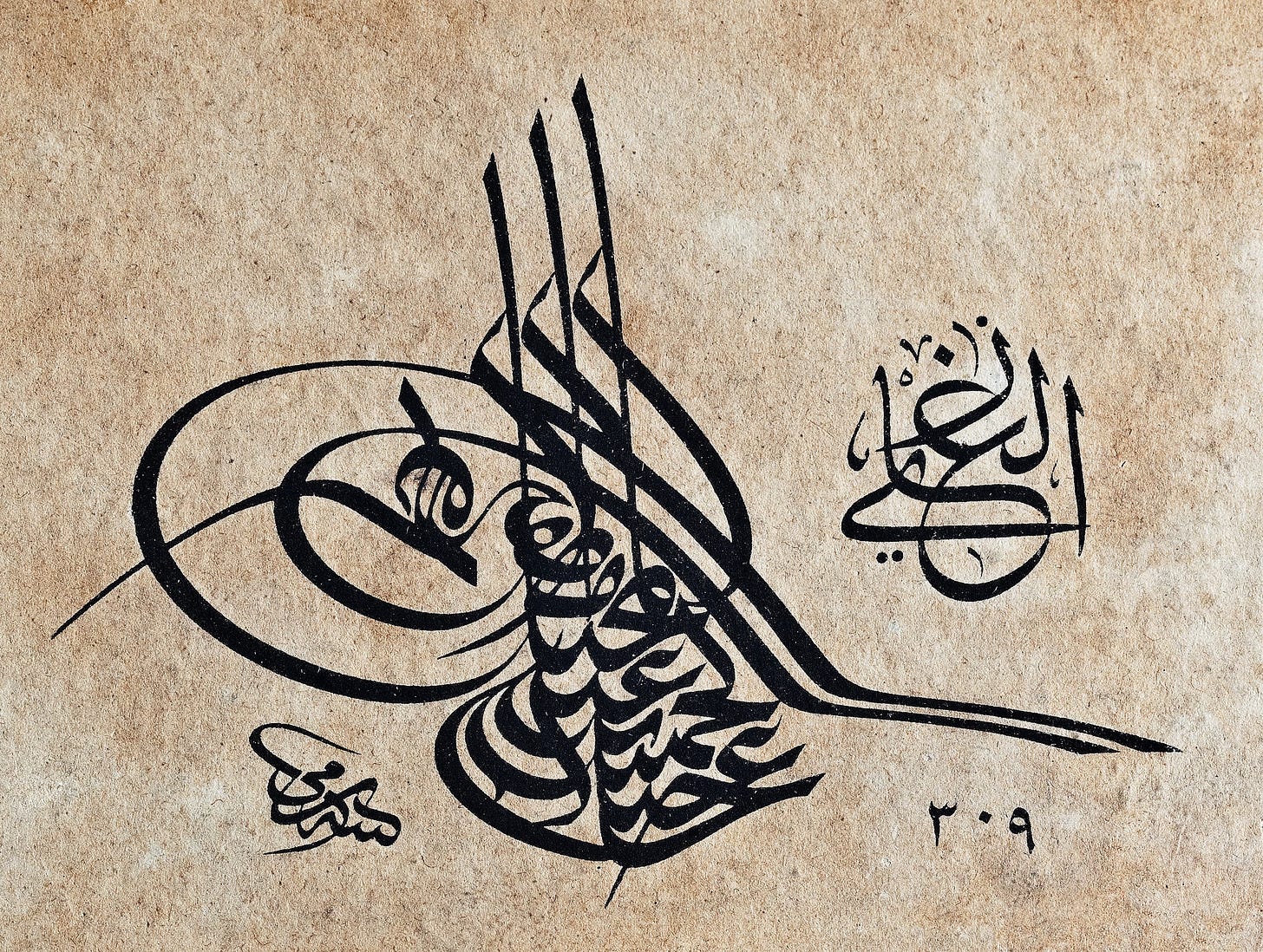
Enjoyed this! Loved the pics of tughras 💫
What a delight! I have been fascinated for years about this…especially having seen exhibits at museums in Istanbul. Such a fabulous art form, if I may say that. Thank you so much.